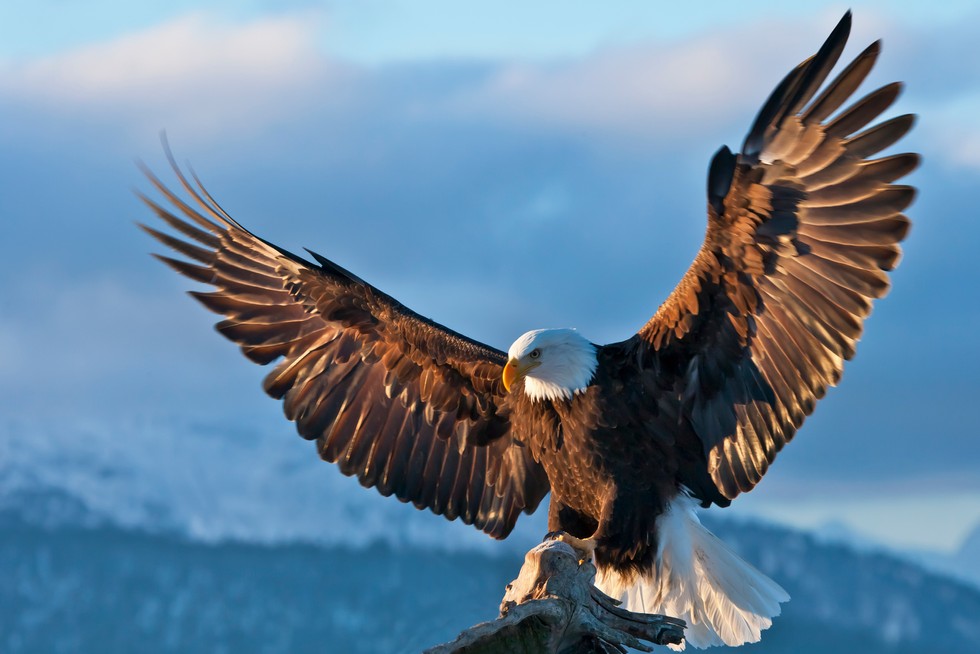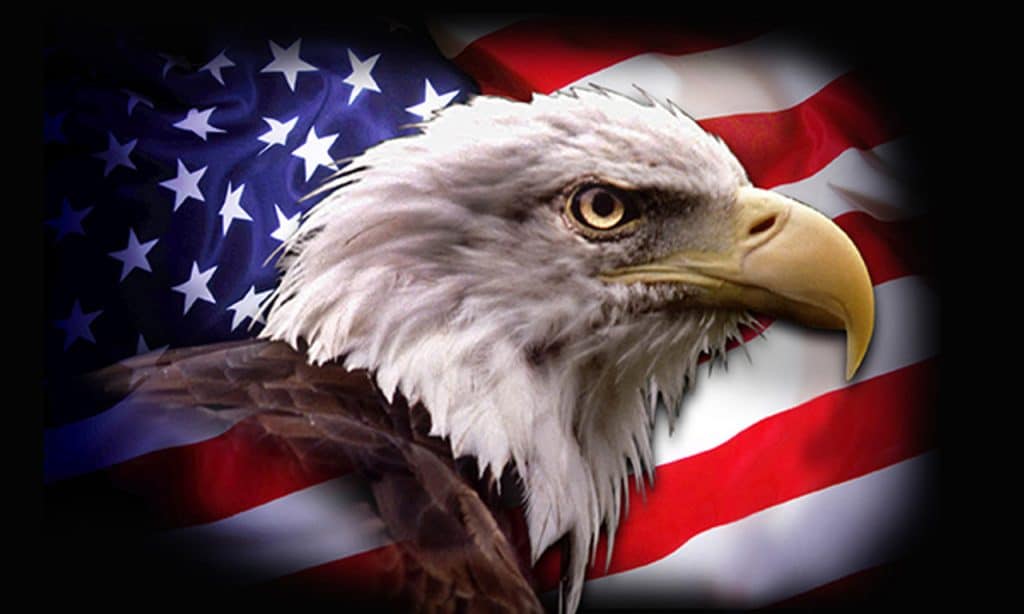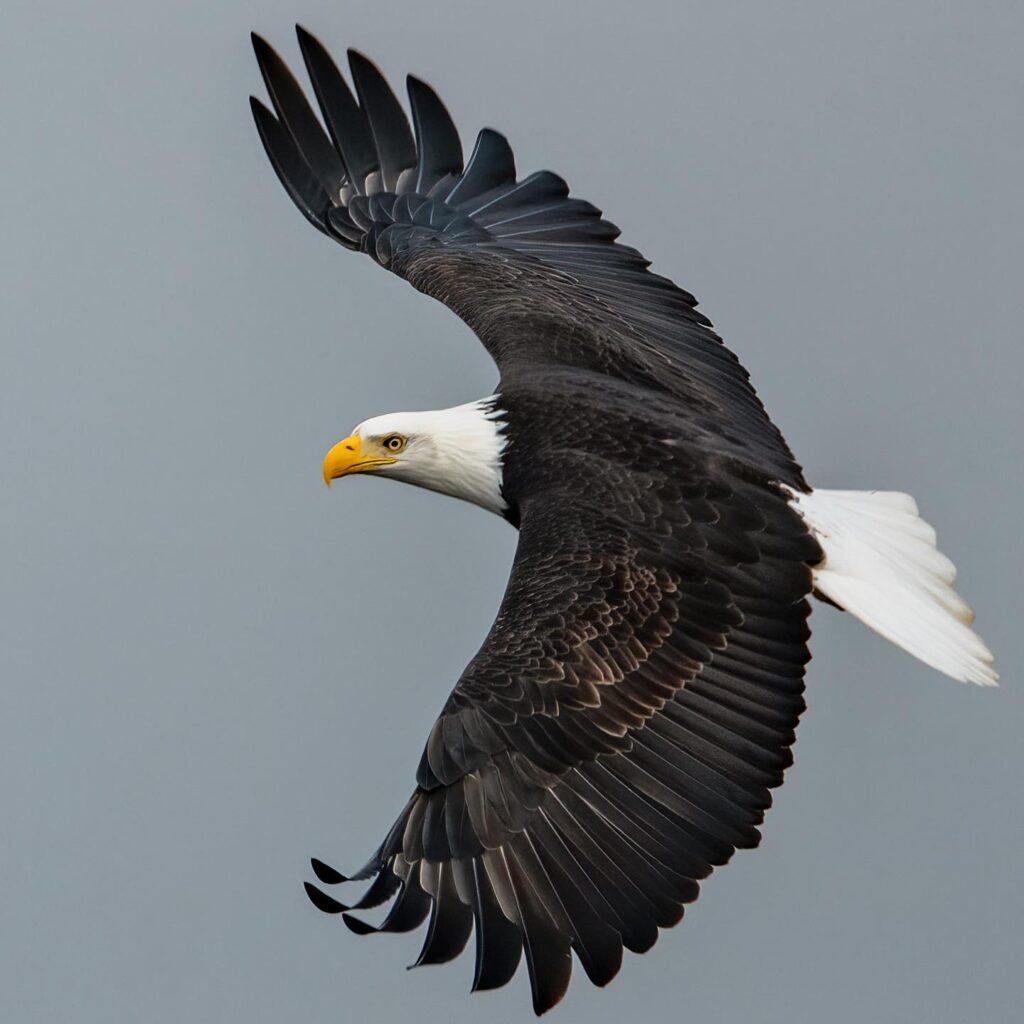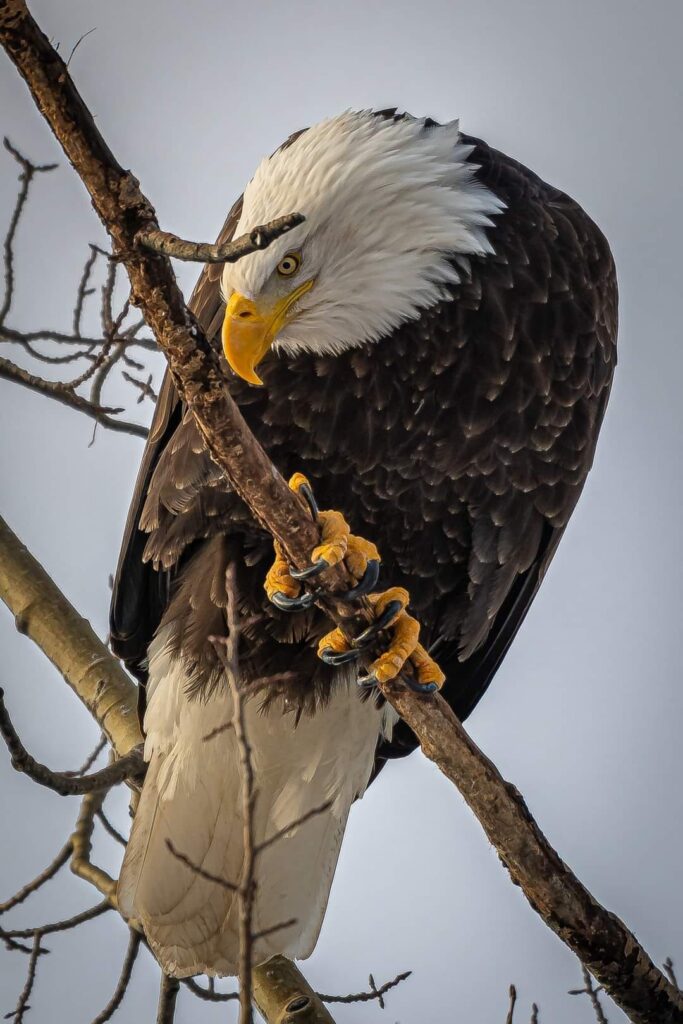The Bald Eagle: A Symbol of Power, Majesty, and American Identity
The bald eagle (Haliaeetus leucocephalus) is an iconic bird that holds a significant place in American culture and symbolism. Renowned for its majestic appearance and powerful presence, the bald eagle has long been associated with strength, freedom, and patriotism. Let’s delve into the fascinating world of this remarkable creature.
The bald eagle is a bird of prey found exclusively in North America, with its range extending from Alaska to northern Mexico. It is the only eagle species unique to this continent. With a wingspan that can reach up to 7 feet (2.1 meters) and a body length of about 3 feet (0.9 meters), the bald eagle is one of the largest birds of prey in North America.
One of the most distinctive features of the bald eagle is its snowy white head and tail, contrasting sharply with its dark brown body. Juvenile bald eagles, however, have a predominantly brown plumage, which gradually changes as they mature. It takes approximately five years for them to acquire their iconic white head and tail feathers.
Bald eagles are known for their incredible hunting skills and keen eyesight. Their sharp, hooked beaks and powerful talons enable them to capture and carry prey with great precision. Fish comprise a significant portion of their diet, and they are adept at snatching them from the water’s surface with remarkable agility. However, bald eagles are opportunistic hunters and also feed on small mammals, waterfowl, and carrion.
Aside from their physical prowess, bald eagles also possess remarkable symbolism. In 1782, the bald eagle was chosen as the national emblem of the United States, representing the country’s strength and resilience. It is prominently featured on the Great Seal of the United States, clutching arrows in one talon and an olive branch in the other, symbolizing the nation’s ability to defend itself while desiring peace.
The choice of the bald eagle as a national symbol was influenced by its majestic appearance and its association with freedom. The bald eagle’s ability to soar high in the sky, unencumbered by boundaries, exemplifies the American spirit and the pursuit of liberty. It has become a powerful icon of national identity, gracing the flags, seals, and emblems of numerous government agencies, military units, and patriotic organizations.
However, the bald eagle’s journey has not always been smooth. In the mid-20th century, the population of bald eagles in the United States faced a severe decline due to habitat loss, pollution, and the use of pesticides like DDT. These factors led to a sharp decrease in their numbers, and by the 1960s, they were on the brink of extinction.
Recognizing the significance of this national symbol and the need for conservation efforts, the United States enacted several laws, including the Bald Eagle Protection Act of 1940 and the Endangered Species Act of 1973, to protect and restore the bald eagle population. These conservation measures, coupled with dedicated conservation organizations and the ban on DDT, have proven successful. As a result, the bald eagle population has rebounded, and in 2007, it was removed from the endangered species list.
Today, the bald eagle population continues to thrive, and it serves as a testament to the power of conservation and environmental stewardship. Its resurgence symbolizes not only the recovery of a majestic species but also the collective efforts of a nation to protect and preserve its natural heritage.
In conclusion, the bald eagle stands as a symbol of power and majesty, representing the strength, freedom, and resilience of the United States. Its striking appearance, impressive hunting abilities, and association with national identity have made it an enduring emblem of American culture. Through conservation efforts, the bald eagle has overcome significant challenges and serves as a reminder of
Hits: 0












